Building a 20th Century Western and Japanese Art Collection: New Acquisitions at Artizon Museum
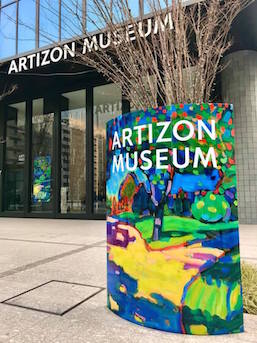
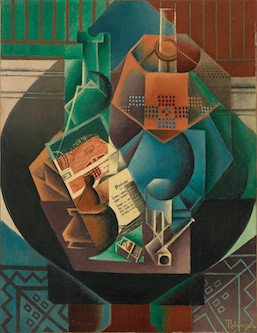 Notable works have been added to the section on Cubism, the revolutionary art era that evolved from around 1907-08. Primarily spearheaded by Pablo Picasso and Georges Braque, the movement emphasized the two-dimensional flatness of the canvas in place of creating the illusion of depth. This section includes works by Paul Cézanne, (Mont Sainte-Victoire and Château Noir, c. 1904–06), Georges Braque (Pedestal Table, 1911) , and Pablo Picasso, (Bottle of Marc de Bourgogne, Wineglass, and Newspaper, 1913), a newly acquired Albert Gleizes (Woman with a Glove, c. 1922), and Jean Metzinger’s Still Life on the Pedestal Table (1916). Metzinger’s painting displays typical Cubism characteristics, showing early Cubism colors such as earth tones of red, orange, brown and green. Metzinger (1883-1956) was a French painter who was first influenced by Neo-Impressionism and Fauvism. Around 1908 he met the writer Max Jacob, who introduced him to Georges Braque and Pablo Picasso. He was immensely influenced by Picasso and participated in Cubism exhibitions and wrote several articles on Cubism.
Notable works have been added to the section on Cubism, the revolutionary art era that evolved from around 1907-08. Primarily spearheaded by Pablo Picasso and Georges Braque, the movement emphasized the two-dimensional flatness of the canvas in place of creating the illusion of depth. This section includes works by Paul Cézanne, (Mont Sainte-Victoire and Château Noir, c. 1904–06), Georges Braque (Pedestal Table, 1911) , and Pablo Picasso, (Bottle of Marc de Bourgogne, Wineglass, and Newspaper, 1913), a newly acquired Albert Gleizes (Woman with a Glove, c. 1922), and Jean Metzinger’s Still Life on the Pedestal Table (1916). Metzinger’s painting displays typical Cubism characteristics, showing early Cubism colors such as earth tones of red, orange, brown and green. Metzinger (1883-1956) was a French painter who was first influenced by Neo-Impressionism and Fauvism. Around 1908 he met the writer Max Jacob, who introduced him to Georges Braque and Pablo Picasso. He was immensely influenced by Picasso and participated in Cubism exhibitions and wrote several articles on Cubism.
In the “Women of Abstract Expressionism” section, Elaine de Kooning’s Untitled (Bullfight) (1959) is a highlight. The artist portrays a bullfight scene from a trip to Ciudad Juárez, Mexico. Many of De Kooning’s drawings, watercolors, and paintings were inspired by bullfights. These works present vibrant and dynamic expressions of light and energy in abstract fields of bright colors. Although Jackson Pollock and De Kooning’s husband, painter Willem De Kooning, were the more visible figures of the postwar Abstract Expression movement, women artists also made major contributions. Because they were under-recognized, there was a profound cry for expressive freedom by female artists, who also included Helen Frankenthaler and Joan Mitchell. Although De Kooning dedicated a large part of her life to promoting her husband’s career, she also became accomplished as a landscape and portrait artist as well as an art critic.
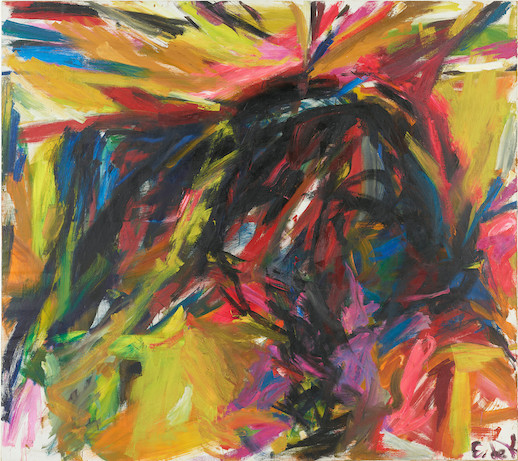
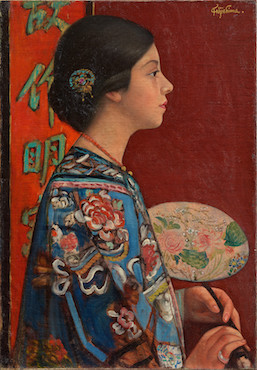
The section “Gutai Paintings” recognizes Gutai as the first radical and artistic group in post-war Japan. Founded in 1954 by painter Jiro Yoshihara from Osaka, the group rejected traditional art styles and instead, explored new art forms in large-scale multimedia environments, performances, and theatrical events emphasizing the relationship between body and matter. Gutai stressed freedom of expression with innovative materials and techniques, and developed a new perspective on individuality and community. Sadamasa Motonaga (1922-2011) joined Gutai in 1955 and pursued a style that involved pouring paint onto a tilted canvas, producing contrasting primary colors and dynamic abstract images. This technique was applied to his work Untitled (1965), which shows three forms lined side by side against a pale painted background. The three heads resemble elements of morphology painted flat in multicolored shades of black, pink, and red.
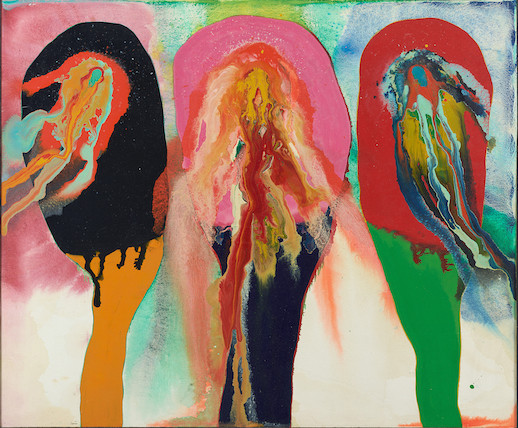
Other Japanese artists featured in the exhibition include Seiki Kuroda, Shigeru Aoki, Hanjiro Sakamoto, Shunsuke Matsumoto, and Harue Koga. For followers of furniture design, a special section covers furniture by one of Japan’s most renowned designers of the 20th century, Shiro Kuramata (1934-1991). Kuramata was a pioneer in the use of industrial materials such as wire mesh, steel, acrylic, aluminum, and plexiglass. His unique pieces break free from conventional form and seem to float in an airy realm of transparency and lightness. He was also known as a surrealist and minimalist. On display are Kuramata’s How High the Moon (c. 1988), an elegant steel and copper-plated mesh chair with no interior frame or support and Expand Chair Set and Glass Table (1986) made of steel-expanded metal, glass, and copper-plated material.
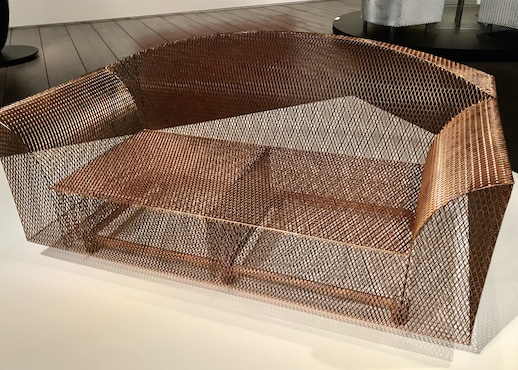
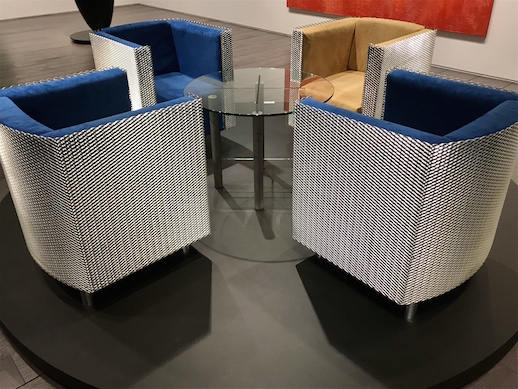
Alma Reyes
Alma Reyes


